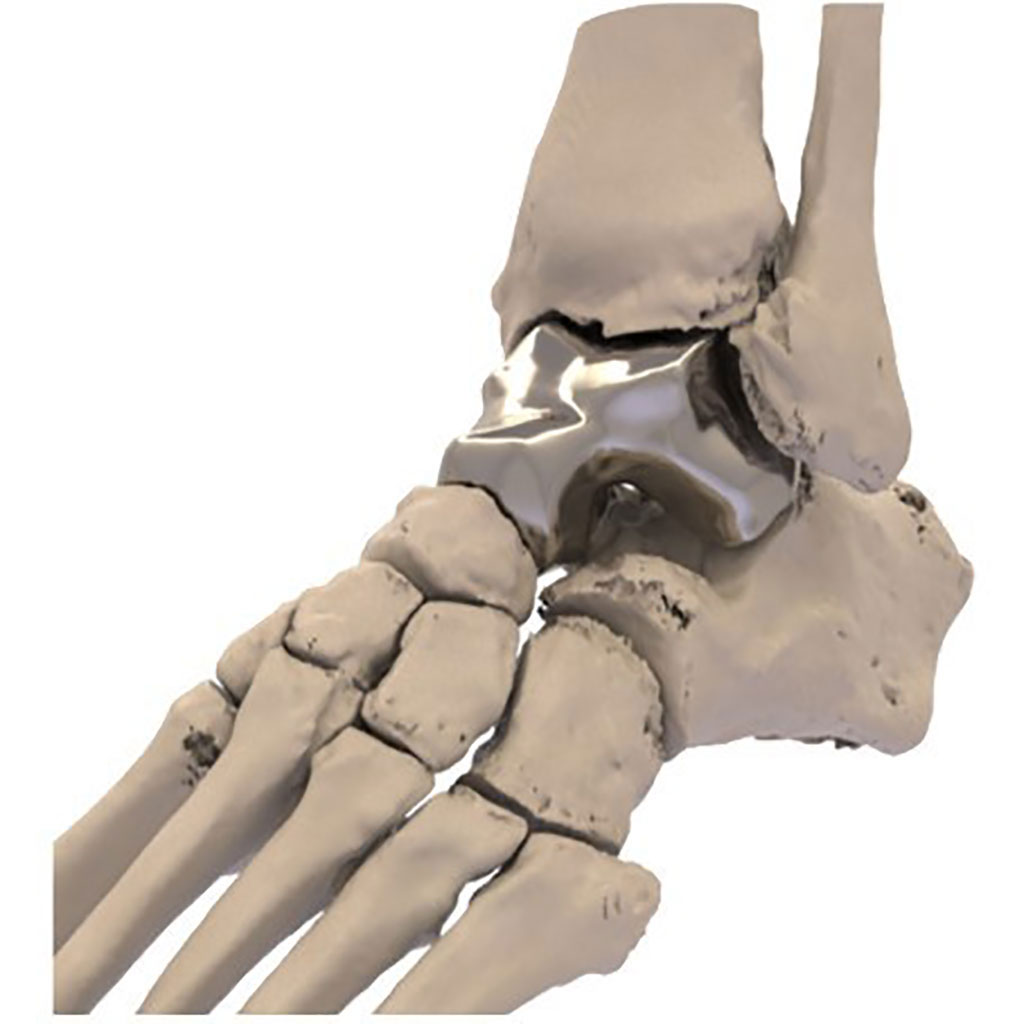Patient Specific Talus Spacer Treats Avascular Necrosis
By HospiMedica International staff writers
Posted on 04 Mar 2021
An additively manufactured patient specific implant allows patients suffering from avascular necrosis (AVN) to regain motion and reduce pain in the ankle.Posted on 04 Mar 2021
The Additive Orthopaedics (Little Silver, NJ, USA) Patient Specific Talus Spacer is a three dimension (3D) printed implant that is designed to provide a joint-sparing alternative to other surgical interventions commonly used in late-stage AVN that may disable motion of the ankle joint. Constructed of a porous lattice structure in order to support bony in-growth, the advanced talus implant includes complex geometries that lead to enhanced osteointegration, which are not possible with traditional manufacturing processes.

Image: The 3D printed Patient Specific Talus Spacer (Photo courtesy of Additive Orthopaedics)
The Patient Specific Talus Spacer is 3D printed for each patient individually, modeled from a computed tomography (CT) scan, and is fitted to the patient's specific anatomy. During the replacement surgery, the patient's talus bone is removed and replaced with the implant, which is made from cobalt chromium alloy. While fusion may become necessary in the future (should the condition worsen), the Additive Orthopaedics Talus Spacer provides a joint-sparing procedure, as it allows the patient to retain motion in the ankle joint.
“Avascular necrosis of the talus is extremely painful and debilitating for these patients. The Patient Specific Talus Spacer is another example of how 3D printed devices can improve the standard of care,” said Greg Kowalczyk, President of Additive Orthopaedics. “Surgical treatment options are below-the-knee amputation or joint fusion, which results in loss of motion of the ankle, and can have poor outcomes.”
AVN of the ankle joint is a serious and progressive condition that causes death of bone tissue stemming from a lack of blood supply to the area. It is often caused by a sudden injury--such as a broken bone or a dislocated joint--or sustained damage to the tissue that develops over time, causing the damaged bone to turn necrotic. When a joint is affected, such as the ankle, the cartilage also deteriorates, leading to arthritis and pain. Late-stage AVN of the ankle may result in the talus partially or fully collapsing.
Related Links:
Additive Orthopaedics














